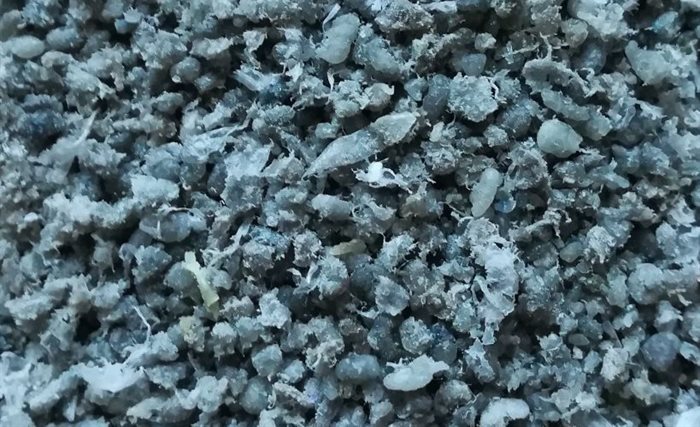
Related
Top stories


LegalCape Town estate agent dupes seller in elaborate property scam, court intervenes
Anelisa Zungu and Renel Fourie 5 hours




More news




In December last year, Mohammed, originally from Ghana, received his PhD in wood product science from Stellenbosch University’s (SU’s) Faculty of AgriSciences.
He developed a wood-plastic composite using a mix of biomass from all parts of a Port Jackson tree (Acacia saligna) and recycled, low-density polyethylene. This light polymer is primarily used in packaging such as plastic bags.
Mohammed showed that this composite material has the necessary physical, chemical and mechanical properties to render it suitable for producing thermal and acoustic insulation boards for use in RDP and other houses.
Wood-plastic composites are generally made from recycled plastic and small wood particles or fibres. Typically, manufacturers separate the woody parts of the chosen plants used from the non-woody parts (such as bark, leaves and seeds). Until now, the non-woody parts of alien invasive trees were considered contaminants rather than suitable components from which to produce composite materials.
Mohammed included every part of the Port Jackson tree — from bark to leaves — in his composite mix. The plant material was salvaged from alien invasive clearing operations in the Western Cape. The trees were used in their entirety as received, without any pre-processing.
Having studied industrial art and wood science in Ghana before enrolling for his PhD, his choice of dissertation topic grew from his concern over the amount of waste generated in agricultural processes and the scale of plastic pollution in the environment.
“Plastic waste is a known global menace, so the idea was to transform this waste material into something useful,” he says. “I was also interested in developing affordable, eco-friendly alternatives to existing low-cost building materials.”
His supervisor was Professor Martina Meincken of SU’s Department of Forestry and Wood Science.
Mohammed’s study is part of a bigger project in the department that investigates ways of using alien invasive wood species, including in the building sector.
Mohammed’s dissertation is titled "Properties of wood-plastic composites made from alien invasive tree waste and recycled low-density polyethylene for interior use in social housing". It underlines the urgent need to find sustainable solutions for South Africa’s social housing challenges.
People living in RDP houses are often exposed to severe heat and humidity due to the low quality of the building materials used. Over the last decade, the budget for these government-subsidised housing units has remained unchanged at R140,000 each. This often results in the use of the cheapest building materials available, he says. In terms of structural components, only the bare minimum is included — thermal and acoustic insulation do not make the cut.

The environmental and economic costs of efforts to control invasive plant species are huge. For example, invasive alien trees consume about 5% of South Africa’s scarce water resources and reduce the carrying capacity of the country’s natural rangelands.
Australian acacia species are among the top 10 worst aliens in South Africa. These trees invade catchments, reduce water runoff, increase the severity of veld fires, and threaten indigenous species.
The South African government has, therefore, established a programme specifically aimed at clearing the most invasive plant species. Several methods are being used to achieve this, including mechanical clearing operations and biological and chemical control programmes.
But the issue of what to do with all the cleared biomass (apart from the fraction of it used as firewood) has, according to Mohammed, emerged as a matter of concern. The biomass is typically left behind in the cleared area to dry, where it poses a fire risk.
Similarly, the surge in plastic pollution and its impact on the health and safety of ecosystems are demanding urgent attention. Currently, plastic packaging accounts for over 35% of plastic litter in South Africa. The recycled plastic Mohammed used in his experiments was of the lowest and cheapest available grade. In addition, it was minimally processed (that is to say, shredded and conglomerated rather than turned into plastic pellets).
He analysed the physical and mechanical properties of the new composite boards and determined how well the material performed in terms of certain processing requirements.
Specifically, Mohammed tested the boards’ resistance to mould infestation and analysed their fire-resistant properties. He also considered the impact of the thermal degradation of the individual biomass constituents (such as bark, twigs, leaves and wood) on the physical, mechanical, acoustic and thermal insulation properties of these boards.
His results show that wood-plastic composites made with Port Jackson trees have better mechanical properties, regardless of their exact composition, compared to two other invasive species, black wattle (Acacia mearnsii) and red river gum (Eucalyptus camaldulensis).
Earlier research by Meincken’s research group on composites made from the whole tree or only the wood from Acacia saligna, Acacia mearnsii and Eucalyptus camaldulensis, showed that the addition of bark, twigs, and leaves reduces the mechanical properties somewhat. However, all boards still met the minimum requirements for interior use.
A surprising finding, however, was that regardless of the biomass type, boards made with Port Jacksons showed significantly better mechanical properties than those made with the other two wood species. This was an unexpected result, especially the large difference between the two — otherwise very similar — Acacia species.
Mohammed found that boards produced with 70 weight percent of wood are best suited to providing overall thermal and acoustic insulation in RDP houses.
The low proportion of non-woody biomass (seeds, leaves and bark) in the composite mix he used did not immediately nor entirely inhibit mould growth on the composite surfaces. Still, it did slow such growth across all samples tested.
These results suggest that the wood-plastic panels may be used in rooms that experience high humidity, such as kitchens and bathrooms, without much risk of degrading or deforming. Moreover, their density and mechanical properties render them suitable for interior wall cladding and ceiling boards.
While it is not commercially available yet, this material could aid in improving low-cost housing in future, he believes.
Mohammed has published some of his results in the European Journal of Wood and Wood Products and in the journal Polymers.